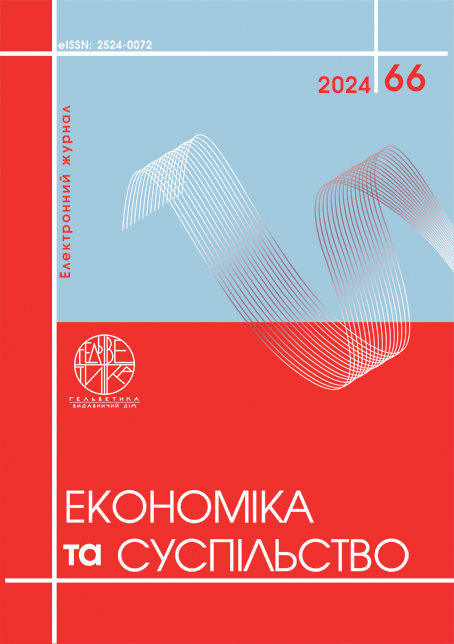APPLICATION OF THE McKINSEY 7S MODEL AS A BASIS FOR SHAPING THE REPORTING FUNCTION BASED ON TBL (TRIPLE BOTTOM LINE) PRINCIPLES
Abstract
This article investigates the application of the McKinsey 7S Model in organizational restructuring, with a focus on digital transformation and its impact on financial planning and reporting. Developed by Tom Peters and Robert Waterman, the McKinsey 7S framework organizes seven critical, interconnected elements: strategy, structure, systems, staff, style, skills, and shared values. These elements are essential for aligning internal organizational processes with the evolving demands of Industry 4.0, which includes the integration of technologies like automation, artificial intelligence, and big data into business functions. The paper highlights the importance of incorporating the Triple Bottom Line (TBL) concept within the financial reporting function. The TBL approach expands the scope of traditional financial performance to include social, environmental, and economic factors, providing a more holistic view of an organization’s impact. The study outlines four key stages of the 7S model’s implementation: an initial analysis of the current organizational structure, identification of gaps and inefficiencies, setting transformation goals, creating an actionable plan, and restructuring according to the plan. By evaluating the interplay between the seven elements during the restructuring process, the study demonstrates how each component of the 7S model influences the effectiveness of financial reporting, particularly in terms of transparency, reliability, and timeliness. Furthermore, the article underscores the critical challenges of balancing the TBL dimensions – social, environmental, and economic – especially in organizations with limited resources or conflicting priorities. In such cases, aligning strategy and structure with sustainable development goals becomes imperative. Additionally, the paper explores the growing importance of integrating digital technologies to facilitate more comprehensive and accurate sustainability reporting. As digital transformation evolves, businesses must continuously adapt, improving their reporting systems to stay competitive. The McKinsey 7S framework, when combined with TBL, serves as a robust tool for guiding organizations through these complex transitions.
References
Wit, B., & Pylak, K. (2020). Implementation of triple bottom line to a business model canvas in reverse logistics. Electronic Markets, 30(4), 679–697. https://doi.org/10.1007/s12525-020-00422-7
Nic Cavanagh & Colin Hickey. (2012). A triple bottom line approach to qra. Chemical Engineering Transactions, 26, 165–170. https://doi.org/10.3303/CET1226028
Barut, M. (2024). Triple bottom line reporting: A study of diversity and application by Australian companies. 3094348 Bytes. https://doi.org/10.25916/SUT.26293447.V1
Elkington, J. & Elkington John. (1999). Cannibals with forks: The triple bottom line of 21st century business (Pbk. ed). Capstone.
Godfrey, J., Hodgson, A., and Holmes, S. (2003) Accounting Theory, 5th Edition. John Wiley and Sons, Milton, Queensland.
Norris, S. (2023). In the eye of the beholder: Stakeholder perceived value in sustainable business models. Long Range Planning, 102406. https://doi.org/10.1016/j.lrp.2023.102406
Upward, A., & Jones, P. (2016). An Ontology for Strongly Sustainable Business Models: Defining an Enterprise Framework Compatible With Natural and Social Science. Organization & Environment, 29(1), 97–123. https://doi.org/10.1177/1086026615592933
Henriques, A., & Richardson, J. (2013). The Triple Bottom Line: Does It All Add Up. Taylor and Francis.
Van Bommel, K., Rasche, A., & Spicer, A. (2023). From Values to Value: The Commensuration of Sustainability Reporting and the Crowding Out of Morality. Organization & Environment, 36(1), 179–206. https://doi.org/10.1177/10860266221086617
Levin, P., & Espeland, W. N. (2002). Pollution Futures: Commensuration, Commodification and the Market for Air. In A. Hoffman, & M. Ventresca (Eds.), Organizations, Policy, and the Natural Environment Stanford University Press.
Elibal, K., Özceylan, E., & Çetinkaya, C. (2024). An ERP Based Industry 4.0 Maturity Model Proposal. Çukurova Üniversitesi Mühendislik Fakültesi Dergisi, 39(2), 535-544. https://doi.org/10.21605/cukurovaumfd.1514628
Peters, T. J., & Waterman, R. H. (2008). In search of excellence: Lessons from America’s best-run companies (Nachdr.). HarperCollins.
Kocaoglu, B., & Demir, E. (2019). The use of McKinsey s 7S framework as a strategic planning and economic assestment tool in the process of digital transformation. Pressacademia, 9(9). https://doi.org/10.17261/Pressacademia.2019.1078

This work is licensed under a Creative Commons Attribution 4.0 International License.


